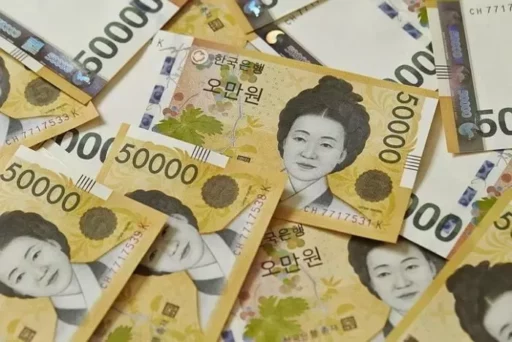1st Quarter Household Surplus Reaches All-Time High, Influenced by Income Increase and Consumption Slowdown
In the first quarter of this year (January to March), households recorded the largest surplus in history on a quarterly basis.
Although income rose due to bonuses and other factors, it was analyzed that the decrease in consumption and the reduction in the supply of new apartments impacted this figure.

According to the Bank of Korea's 'Q1 2025 Fund Flow (Provisional)' statistics released on the 8th, the net fund operation amount of households (including individual entrepreneurs) and non-profit organizations in the first quarter was recorded at 92.9 trillion won. This figure is over 30 trillion won higher than the previous quarter's figure of 62.6 trillion won in Q4 of last year, marking the largest scale since the compilation of these statistics.
The net fund operation amount is the value obtained by subtracting the funds raised from the funds operated by economic entities during the period.
Generally, households exhibit a positive net fund operation amount, thereby playing a role in supplying funds to economic entities such as businesses or the government that require net fund procurement.
Household Fund Operation Patterns and Debt Status
The household fund operation scale in the first quarter was 101.2 trillion won, an increase of 30 trillion won from the previous quarter (71.2 trillion won). Notably, the deposit amount in financial institutions increased by 49.7 trillion won, and the operation amount of domestic and foreign equity securities and investment funds also rose by 29.3 trillion won.
This indicates that households have evenly distributed surplus funds across safe assets and investment assets.

On the other hand, the funds raised by households in the first quarter were 8.2 trillion won, decreasing from 8.6 trillion won in the previous quarter. A notable reason for this reduction was a 3 trillion won decrease in borrowing from other financial institutions such as securities companies and credit card firms.
As of the end of Q1, the household debt ratio to nominal GDP stood at 89.4%, a 0.2 percentage point decrease from 89.6% in Q4 of last year. This marks the sixth consecutive quarter of decline in the household debt ratio.
Kim Yong-hyun, head of the Fund Flow Team at the Bank of Korea, explained, "As household income increased due to the influx of bonuses at the beginning of the year, the decrease in the supply of new apartments and the slowdown in consumption contributed to the increase in surplus funds."
Additionally, he anticipated that "in Q2 of this year, as housing transactions increase in the metropolitan area including Seoul, the rise in household debt is expected to be larger, and there is a possibility of a slight increase in the household debt ratio against GDP."
Trends in Fund Procurement by Corporations and the Government
Material photo for understanding the article / gettyimagesBank

The net fund procurement scale for non-financial corporate entities in Q1 was 18.7 trillion won, an increase of 2.5 trillion won from the previous quarter (16.2 trillion won).
Despite ongoing investment slowdown due to heightened uncertainty in domestic and international conditions, the demand for corporate working capital increased largely due to the payment of bonuses.
The net fund procurement amount for the general government significantly increased from 3.9 trillion won in the previous quarter to 40.2 trillion won. This is analyzed as a result of government spending increasing at a greater pace than revenue.
Image Source: Material photo for understanding the article / gettyimagesbank, News1

![[Breaking News] Jeong Cheong-rae elected as new leader of the Democratic Party… First ruling party head under Lee Jae-myung’s government](https://wordkorean.com/wp-content/uploads/2025/08/thumbnail-25.jpg)
